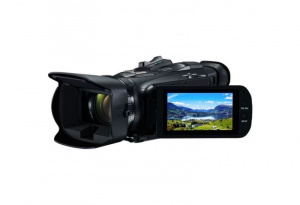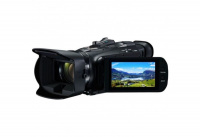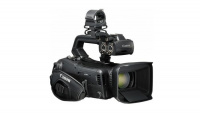Camcorders
 Canon Legria HF G26 Camcorder | |
| Manuals | |
|---|---|
Camcorders are video recording devices used to create stimuli and/or record participant behavior during research experiments. In an effort to standardize video recording formats and control interfaces, the TSG has adopted the Canon Legria and XA/XF ranges of camcorders for use in our research labs (effective 2019).
Specifications

|

| |
|---|---|---|
| Canon Legria HF G26 | Canon XF405 | |
| Image | ||
| Max. Resolution | 1080p | 4K |
Usage
Observation
The most common use of our camcorders is to record participant behavior in our labs. Be aware of your recording settings when filming many participants for many hours: the higher the resolution, framerate and bitrate, the larger the file size. Large files may take a long time to transfer and backup, and will cost the faculty a lot of server storage space when archived in Workgroup folders and Data repositories. The TSG advices the following settings for general purpose recordings for an optimal quality to file-size ratio, as well as for easy importing in any video coding software:
| Format | MP4 |
| Resolution | 1280 * 720 pixels (720p) |
| Framerate | 25 fps (progressive) |
| Bitrate | 4 Mbps (for h264 codec) |
If you wish to record highly detailed movements, or retain more detail over larger distances, increase the resolution and bitrate. In most cameras these values are linked. Check the user manual or our quick start guide for your camera model to see how to adjust these settings.
Stimuli Recording
If you wish to use our camcorders to record video for creating stimuli, please contact Erik van den Berge.
See Also